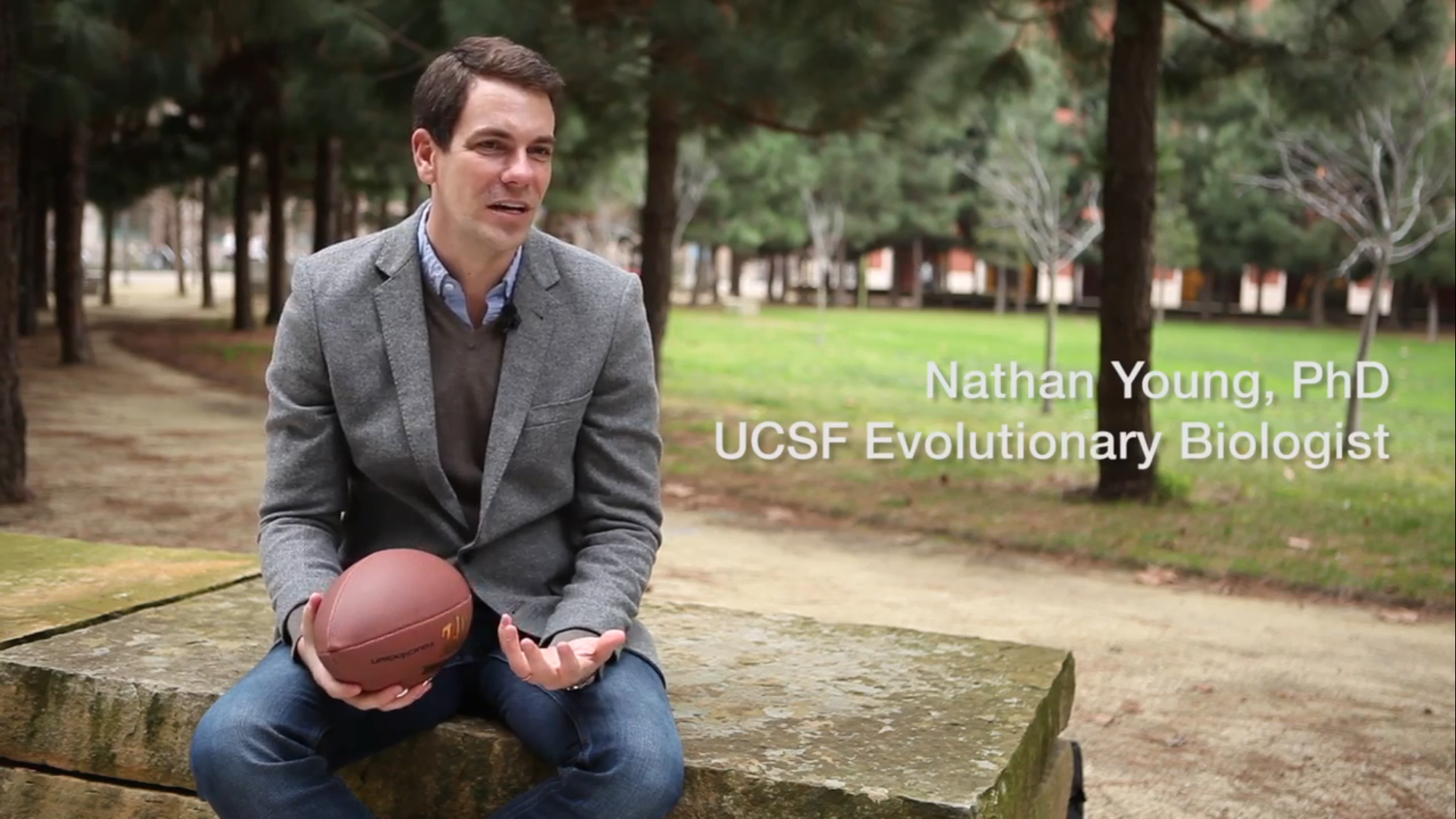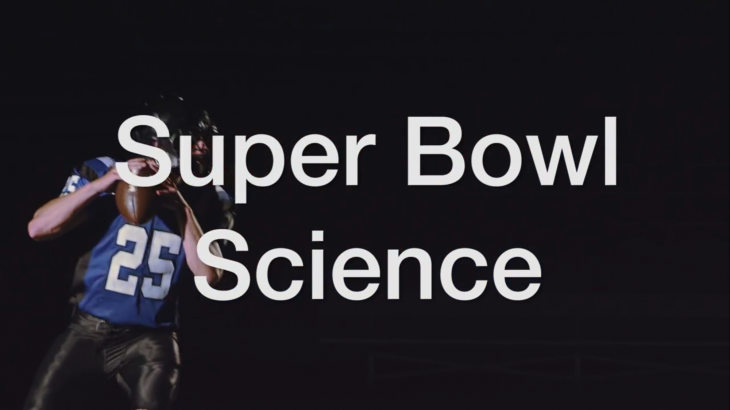The Evolution of Football: Americas Favorite Sport Celebrates What Makes Us Uniquely Human | UC San Francisco
Ever wonder why chimpanzees dont play football? Turns out evolution gave us a choice between swinging from the treetops and throwing a good tight spiral. In fact, as UC San Francisco evolutionary biologist Nathan Young, PhD, and neuroscientist Philip Sabes, PhD, relate in this brief videothe same physical and mental abilities that evolved to allow our ancient ancestors to hunt down prey or scare off predators with a well-aimed stone or spear can still be seen in todays Hail Mary passes. Theyre the same skills that helped our species become the most dominant predator on Earth.  All in the Shoulder In fact, thanks to evolution, you dont have to be an NFL star to throw better than any of our closest primate relatives, Young says. Any human can do that, according to Young, thanks to unique properties of our shoulders. Young studies human origins and anatomy in UCSFs Orthopaedic Trauma Institute, which is part of the Department of Orthopaedic Surgery, with a particular focus on how evolution altered the anatomy of human arms and shoulders. In the millions of years since humanitys last common ancestor with chimpanzees, Young says, our species has evolved a specialized shoulder blade that can be used like a slingshot: storing energy in the windup, then rapidly releasing it in a powerful and precise fling. But the evolutionary changes that gave us the spiral come with some significant trade-offs, Young says: The mobility of the human shoulder leaves it open to dislocations and other injuries when athletes take the human bodys physical abilities to the breaking point.
All in the Shoulder In fact, thanks to evolution, you dont have to be an NFL star to throw better than any of our closest primate relatives, Young says. Any human can do that, according to Young, thanks to unique properties of our shoulders. Young studies human origins and anatomy in UCSFs Orthopaedic Trauma Institute, which is part of the Department of Orthopaedic Surgery, with a particular focus on how evolution altered the anatomy of human arms and shoulders. In the millions of years since humanitys last common ancestor with chimpanzees, Young says, our species has evolved a specialized shoulder blade that can be used like a slingshot: storing energy in the windup, then rapidly releasing it in a powerful and precise fling. But the evolutionary changes that gave us the spiral come with some significant trade-offs, Young says: The mobility of the human shoulder leaves it open to dislocations and other injuries when athletes take the human bodys physical abilities to the breaking point.
Mind Over Matter
Theres more to a great pass than pure power, however, Sabes says a quarterback also has to be smart. First, a quarterback has to decide where to throw. For this, says Sabes, who is a professor of physiology at UCSF, the brain needs to keep a complex mental map that continually updates the locations of the receivers and defenders, andjust as importantlypredicts where they will be when the football arrives. Putting the ball in the right place requires balancing prior information, such as what play was called and how players typically move, with what the quarterback sees at that moment on the field. Next, to make a powerful and precise throw, the brain relies on another continually updated map that tracks the position of the throwers own body and arm in space.
Sabes research, both in the lab and using performance data compiled by Major League Baseball on its pitchers, has shown that no matter how expert an athlete is, she or he is continually relearning, recalibrating these sensory and motor computations with every throw. Despite the commonplace idea of muscle memory, Sabes says, its the brain that does the learning. Its the brain that is constantly striving to improve performance. So yes, evolution has given us the tools to throw a football with power, accuracy and grace, but neither brawn nor brains alone can carry the day. Together, brawn and brain have allowed humans to produce great civilizations and great quarterbacks to win the Super Bowl. Do you have any comments on this story? Join the conversation on our Facebook and Twitter pages.



